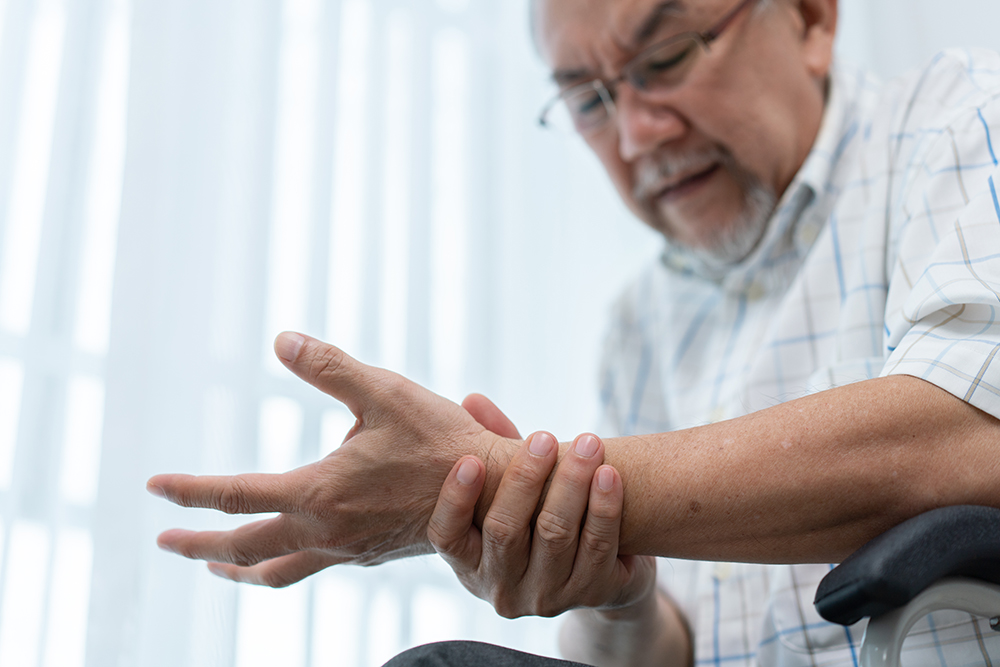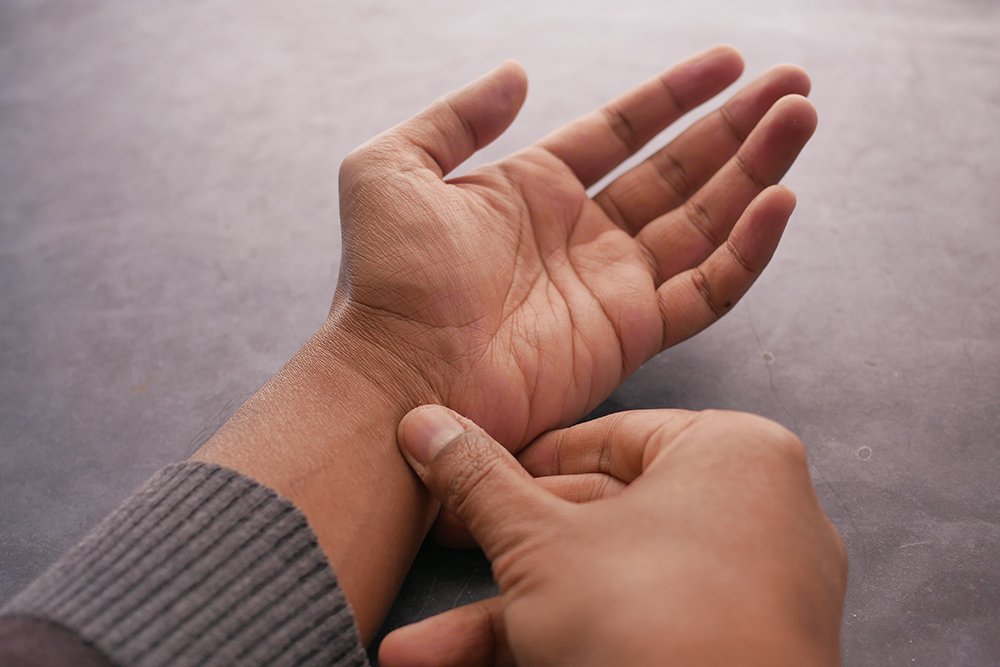Contents
Our hands and wrists are some of the hardest-working parts of the body. We use them all day, every day, and using tech devices is notorious for causing hand and wrist pain. It’s not just gamers who are feeling aches and stiffness in their hands anymore. People with desk jobs and really anyone who uses a computer or a smartphone can be subject to pain from repetitive use.
There are a few different conditions that can result from overuse, and others that come with age or acute injuries. Keep reading to learn more about pain in the back of the hand and how it can be treated.
What’s causing pain in the back of my hand?
Arthritis and carpal tunnel syndrome are well-worn diagnoses for pain in the hands, wrists and fingers. (Forgive the pun!) The bones, nerves, joints, tendons, ligaments and muscles of your hands can all become inflamed from different types of injuries. Hand or wrist fractures can happen quickly or result from weakening over time. Neuropathy or nerve damage can cause tingling, numbness and burning sensations in addition to aching pain.
A couple of conditions you might not know about are de Quervain’s tenosynovitis and extensor tendon injuries. De Quervain’s tenosynovitis causes pain and swelling near the base of the thumb, and it can limit your ability to move your thumb or grasp things. The extensor tendons run along the back of your hand to help you flex your fingers back. A cut in one of these tendons can cause pain and deformities, and they can be injured by jamming your hand.
6 conditions that may be causing pain in the back of your hand
There are too many potential causes for pain in the back of the hands to cover them all in this article. These are some of the situations we see the most. To get a clear idea of what’s causing your pain, you may have to see a doctor and have imaging tests done.
For many common hand injuries, a physical therapist can help you narrow down potential causes. Your PT can provide gentle treatments to help your hand start healing and teach you exercises to continue strengthening your hand at home. It’s important to get a professional assessment because we can create a personalized treatment plan for you with targeted exercises for the specific pain you’re having.
Your hands are complex systems with several types of tissue working together for dexterity and precise coordination. The bones, joints, cartilage, ligaments, tendons, blood vessels, nerves and tissue of the hand require expert care for the best outcomes. Lattimore Physical Therapy clinics have 30 PTs with a Certification in Orthopedic Manual Physical Therapy (COMT). The treatments we provide are focused on helping your hands heal as completely and efficiently as possible.
Here’s more information on six common conditions that can cause pain in the back of your hand:
- Hand osteoarthritis — Old age, repetitive movements and natural deterioration can lead to osteoarthritis. This is when the cartilage in your joints wears away and your bones begin to rub together. The back of your hand contains many small joints. The hands are sometimes the first place people will notice arthritis pain.
- De Quervain’s tenosynovitis — Researchers still aren’t sure exactly what causes de Quervain’s tenosynovitis, but repetitive movements can make it worse. People with this condition notice pain and stiffness closer to the thumb side of their wrist. The thumb may seem to lock in place, and moving your hand at all can aggravate the pain.
- Carpal tunnel syndrome — The carpal tunnel is a narrow passageway with a nerve running through the palm side of your hand. Compression of this nerve can cause numbness, tingling and weakness in the thumb and fingers.
- Peripheral neuropathy — There are several different types of peripheral neuropathy and patterns people experience depending on which nerves have been affected. “Peripheral” just refers to the nerves farthest away from the brain and spinal cord.
- Hand or wrist injuries — It may not be immediately obvious when you’ve injured your hand or wrist. Injuries can develop slowly over time or in a moment of impact.
- Extensor tendon injuries — A cut to the back of your hand can cause tension and deformities if it heals without proper treatment. Extensor tendon injuries cause pain near the surface along the metacarpal bones on the back of the hand.
What can help relieve my hand pain?
In addition to physical therapy, there are some things you can do at home to relieve pain in the back of your hand. For mild wrist pain and swelling, we recommend the RICE method: rest, ice, compression and elevation. Try alternating heat and cold therapy to reduce swelling, numb pain away and relax your muscles. You can use an Ace bandage or a forearm splint to support your hand and wrist while the pain heals. Over-the-counter pain relievers can also be used for occasional hand and wrist pain.
If you’ve tried at-home treatments and your pain persists for two weeks or gets worse, you should seek professional medical treatment.
Here are some of the physical therapy techniques we use to treat hand and wrist pain:
- Therapeutic exercises and stretches — Strengthening the muscles surrounding an injured joint can help increase support and mobility in the injured area.
- Custom splinting — We can create custom splints to help reduce movement of your wrist and provide support while your hand heals. This can help with moderate pain and severe injuries that require immobilization.
- Manual therapy — Hands-on physical therapy techniques can help reduce stiffness, restore range of motion and improve circulation for faster healing.
- Instrument-assisted soft tissue mobilization (IASTM) — IASTM therapy involves the use of ergonomic stainless steel tools. Using curved tools helps your PT revive movement and healthy soft tissue growth within muscles and tendons.
Try physical therapy for pain in the back of your hand at Lattimore PT
Proper treatment for hand and wrist injuries is critical to ensure the maximum range of motion and prevent deformities. You can go straight to your physical therapist at Lattimore Physical Therapy for mild and moderate pain in the back of your hand. If you’re experiencing severe pain or you think you’ve injured your hand, you should see your medical care provider first. After you’ve received medical treatment, we can help rehabilitate your hand as it heals.
Have any additional questions? Contact our team today for more information or to schedule an initial appointment.



